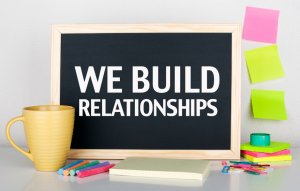
Leaders often wait for a miracle to get the team on the same page. Yet, unfortunately, it rarely happens without the directed effort of the leader.
In my recent article, Are Your Relationships Working? I mentioned “Bridge Communication Gaps” as one of the essential tips for building good and effective working relationships.
Yet, many leaders are perplexed about how to do this in today’s workplace due to diversity, remote work options, and differences of opinion.
5 Essential Ways to Bridge Communication Gaps between Teams and Results
Appreciate Differences … Where Do I Start? You start by using a qualified job fit assessment that provides objective information (not the type of assessment that shows how people want to be seen). For many years, I’ve used the granddaddy of objective job-fit assessment products: PXT Select. Example: When team members (and business partners, boss/employee) are in conflict, I use it to provide an objective review of what’s working and where the communication problems exist. Everyone thinks they know the answers. But 99% of the time, there are surprises. This process and the knowledge you gain build comradery and resolve misperceptions.
Get Everyone on the Same Page. Share the goal, budget, and deadline with the team and allow them to contribute their ideas, thoughts, and opinions. Yes, this often requires training for you and the team on developing and using the skills necessary to communicate, create strategies, and execute results.
Include Everyone’s Ideas. It doesn’t mean all of their ideas are viable and will be used. But when everyone’s ideas are heard and acknowledged, they feel respected and valued. This closes many communication gaps while building positive working relationships.
Brainstorm for Solutions. The same mindset that created the problem will not solve the issue. It requires listening outside the norm and allowing new, off-the-wall ideas to take hold. It will require setting aside egos and judging what is or is not a good idea. Encourage everyone to construct the solution by asking questions for clarification.
Celebrate the Wins and Learn from the Failures. This is critical and often overlooked. Conduct a What Worked?/What Didn’t Work? for each and every project. This review is also a great way to get unstuck in a project, acknowledge the team, and fully appreciate their efforts.
©Jeannette Seibly 2023 All Rights Reserved
 Jeannette Seibly is The Leadership Results Coach. She’s celebrating 30 years as an award-winning international executive consultant, speaker, and business author. Her clients value the listening and positive difference she brings to any conversation. As a result, they can work through sticky situations and challenging relationships to become positive influencers. Contact Jeannette for a confidential discussion. PS: She’s also a three-time Amazon Best-Selling Author!
Jeannette Seibly is The Leadership Results Coach. She’s celebrating 30 years as an award-winning international executive consultant, speaker, and business author. Her clients value the listening and positive difference she brings to any conversation. As a result, they can work through sticky situations and challenging relationships to become positive influencers. Contact Jeannette for a confidential discussion. PS: She’s also a three-time Amazon Best-Selling Author!
A note from Jeannette about bridging communication gaps: For many leaders, this can be scary. They either don’t know how, are afraid to ask for help, or are unwilling to admit there is a problem. However, failure to bridge communication gaps will derail your ability to create good working relationships. It will also negatively impact your retention, revenues, and results. Contact me if you know you should but don’t want to. Don’t worry. You’ll glean at least one idea you can implement immediately.
 This week’s PODCAST: Listen to How the pandemic led a professional copywriter, speaker and author to become an accidental artist with my guest, Debra Jason, on The Entrepreneurial Leader.
This week’s PODCAST: Listen to How the pandemic led a professional copywriter, speaker and author to become an accidental artist with my guest, Debra Jason, on The Entrepreneurial Leader.
NOTE: I love coaching current and future leaders to support them in leading, managing, and hiring their teams. Contact me if you want an in-depth, one-on-one hour over 13 weeks. It will accelerate your ability to influence others, hire the right people, and coach your team for unprecedented results. SeibCo.com/contact/


 This week’s PODCAST: Listen to the Moments of Brilliance: You Don’t Have to Have the Answers! with my guest, Denise Roberts, on
This week’s PODCAST: Listen to the Moments of Brilliance: You Don’t Have to Have the Answers! with my guest, Denise Roberts, on 
 Jeannette Seibly is The Leadership Results Coach. She’s celebrating 30 years as an award-winning international executive consultant, speaker, and coach. Her clients value the listening and positive difference she brings to any conversation. Feel stuck in a sticky situation or a challenging relationship? Want straightforward counsel to blast through it?
Jeannette Seibly is The Leadership Results Coach. She’s celebrating 30 years as an award-winning international executive consultant, speaker, and coach. Her clients value the listening and positive difference she brings to any conversation. Feel stuck in a sticky situation or a challenging relationship? Want straightforward counsel to blast through it? 




 Jeannette Seibly is The Leadership Results Coach. She’s celebrating 30 years as an award-winning international executive consultant, speaker, and coach. Her clients value the listening and positive difference she brings to any conversation. Feel stuck in a sticky situation or in challenging relationships? Want straightforward counsel to blast through it? Contact Jeannette for a confidential discussion. PS: She’s also a three-time Amazon Best-Selling Author!
Jeannette Seibly is The Leadership Results Coach. She’s celebrating 30 years as an award-winning international executive consultant, speaker, and coach. Her clients value the listening and positive difference she brings to any conversation. Feel stuck in a sticky situation or in challenging relationships? Want straightforward counsel to blast through it? Contact Jeannette for a confidential discussion. PS: She’s also a three-time Amazon Best-Selling Author!

